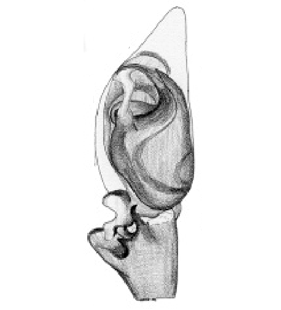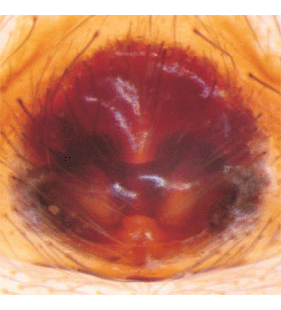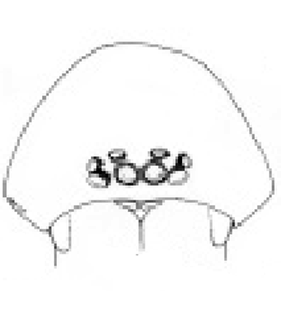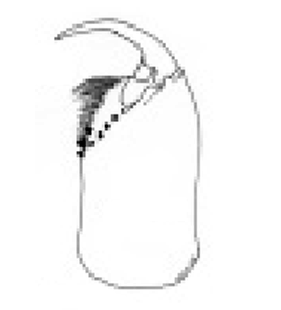Creugas gulosus Thorell, 1878
Beschreibung
Körperfärbung dunkel rötlich-braun. Prosoma fein granuliert.
Körperlänge Männchen: 7.5-8.0 mmKörperlänge Weibchen: 7.5-8.0 mm
Zusätzliche Informationen
Diese Art ist nicht-einheimisch für Europa, ihr Ursprungsgebiet ist tropisch/subtropisch, aber nicht genauer bekannt, so dass sie als kryptogen gilt. Sie wurde mindestens einmal nach Europa eingeschleppt, konnte sich aber nicht etablieren.
Verbreitung
Abbildungen
Verbreitungsnachweise
"No reference" bedeutet nicht, dass die Art in diesem Land nicht vorkommt, sondern dass wir die Referenz hierfür noch nicht eingefügt haben. Wir arbeiten daran.
Literatur
Bosselaers J, Urones C, Barrientos J A, Alberdi J M (2009) On the Mediterranean species of Trachelinae (Araneae, Corinnidae) with a revision of Trachelas L. Koch 1872 on the Iberian Peninsula. Journal of Arachnology 37: 15-38 ![]()
Pickard-Cambridge O (1911a) Arachnida. In: Additions to the wild fauna and flora of the Royal Botanical Gardens: XII. Bulletin of Miscellaneous Information (Royal Botanic Gardens, Kew) 12: 370-373 ![]()
Saaristo M I (2002) New species and interesting new records of spiders from Seychelles (Arachnida, Araneaea [sic]). Phelsuma 10(suppl. A): 1-31 ![]()
Sherwood D, Sharp A (2023) Familiar face, new destination: first records of the invasive spider Creugas gulosus Thorell, 1878 on Ascension Island (Araneae: Corinnidae). Revista Ibérica de Aracnología 43: 30-32 ![]()
Wilson R (2012) An American jumper in Leeds, west Yorkshire and an update on non-native taxa recorded in the UK. Newsletter of the British Arachnological Society 123: 10-15 ![]()
WSC (2024) World Spider Catalog. Version 25.0. Natural History Museum Bern, online at http://wsc.nmbe.ch (22.01.2024) doi: 10.24436/2 ![]()





